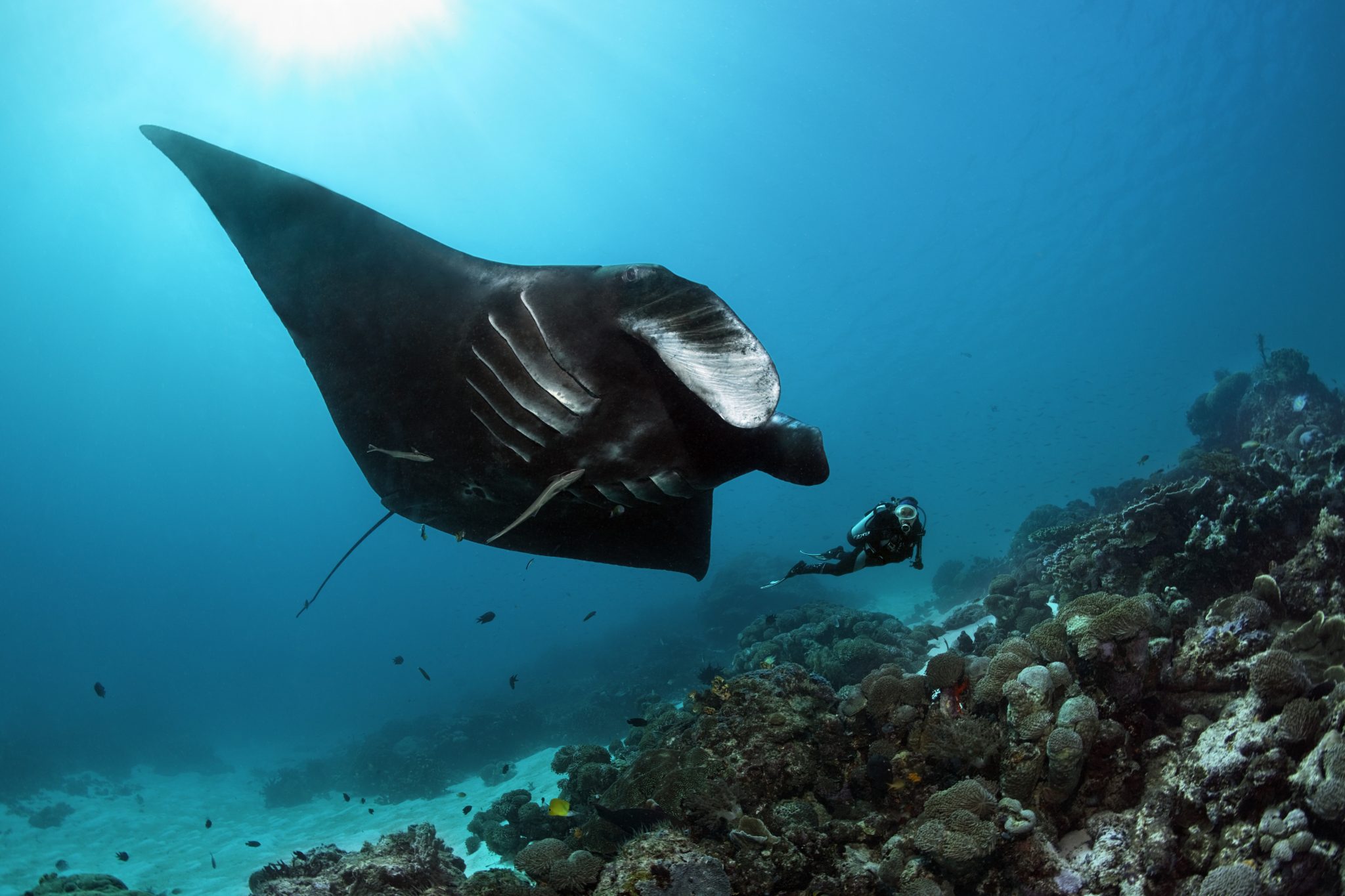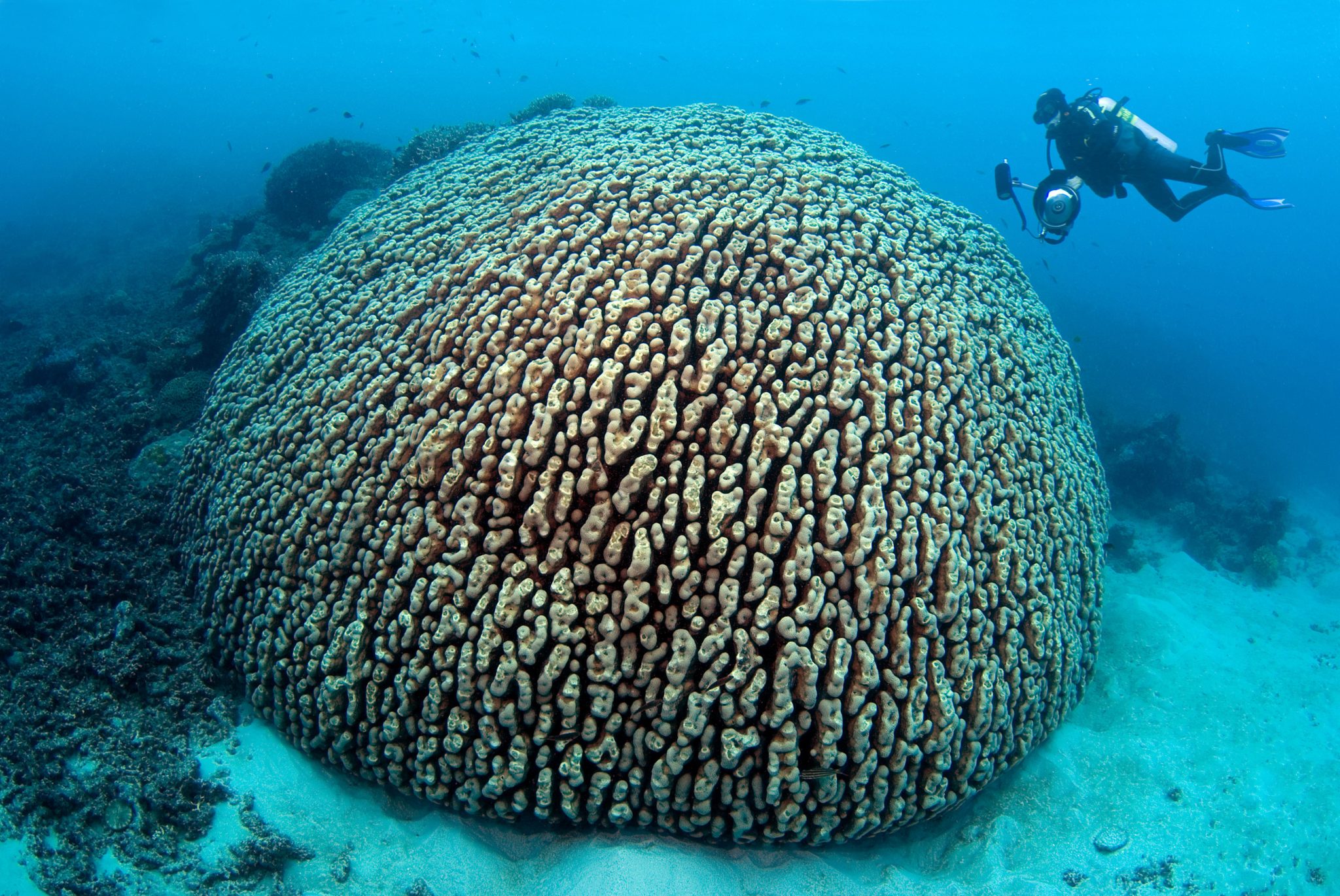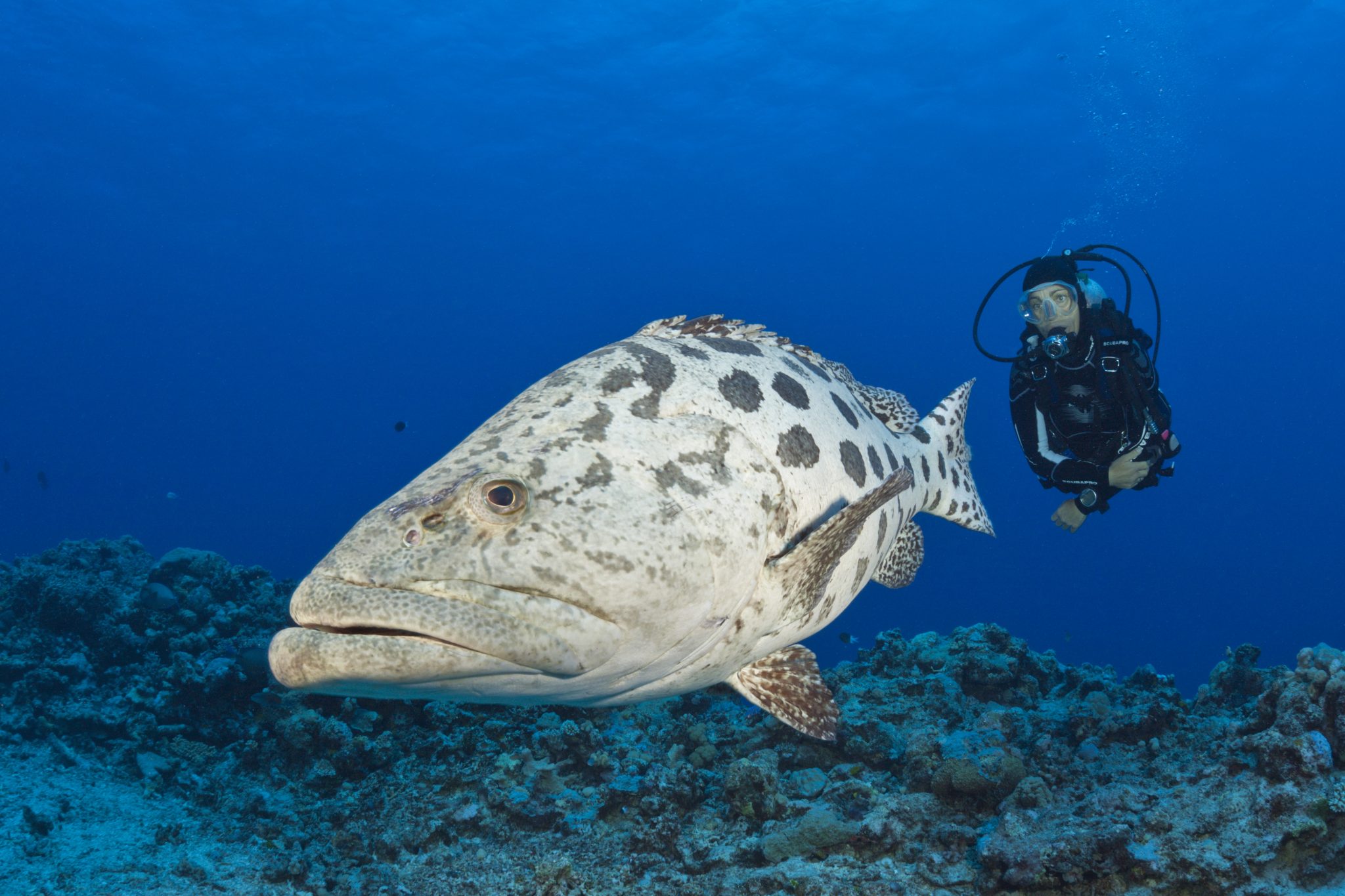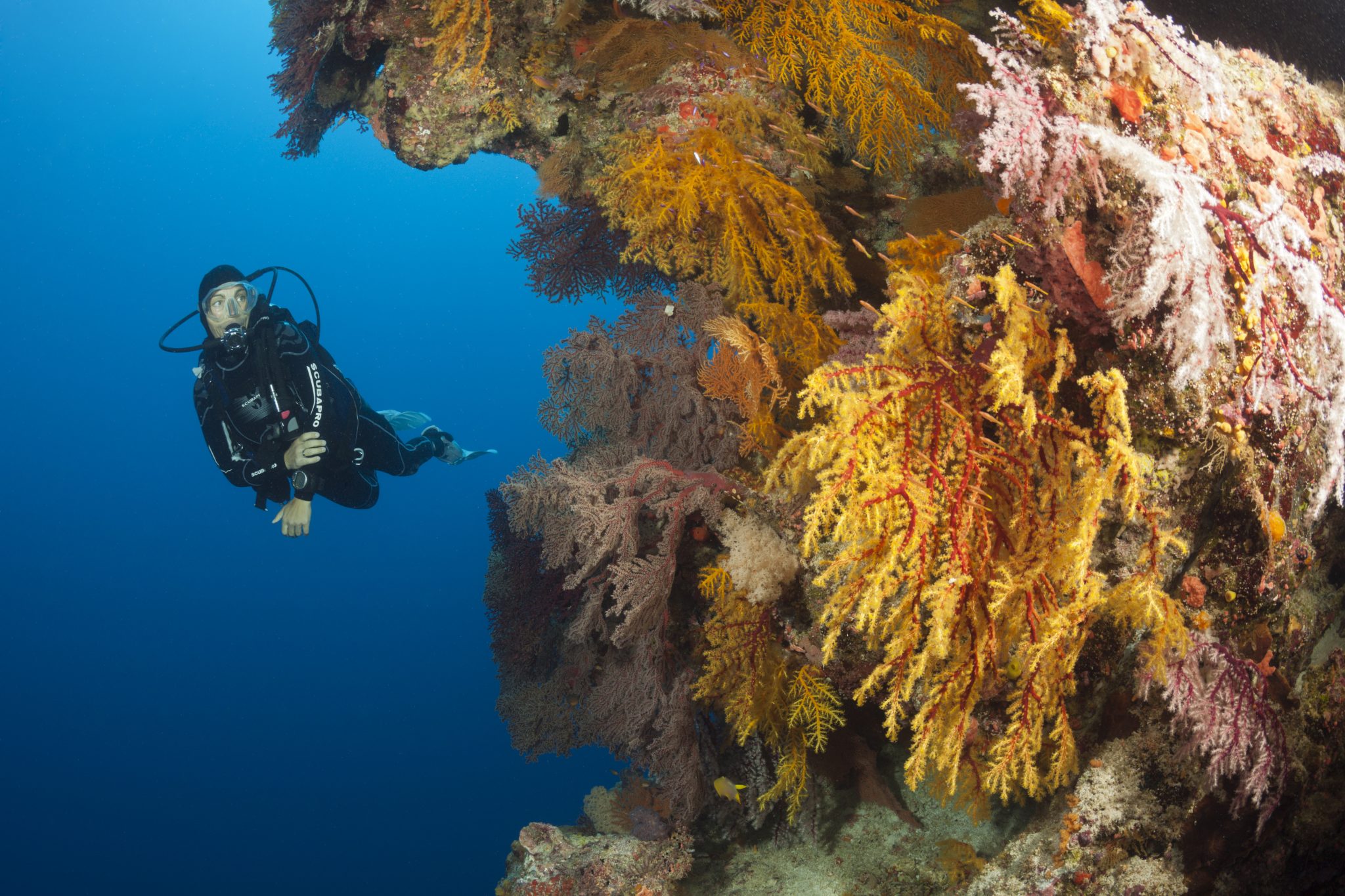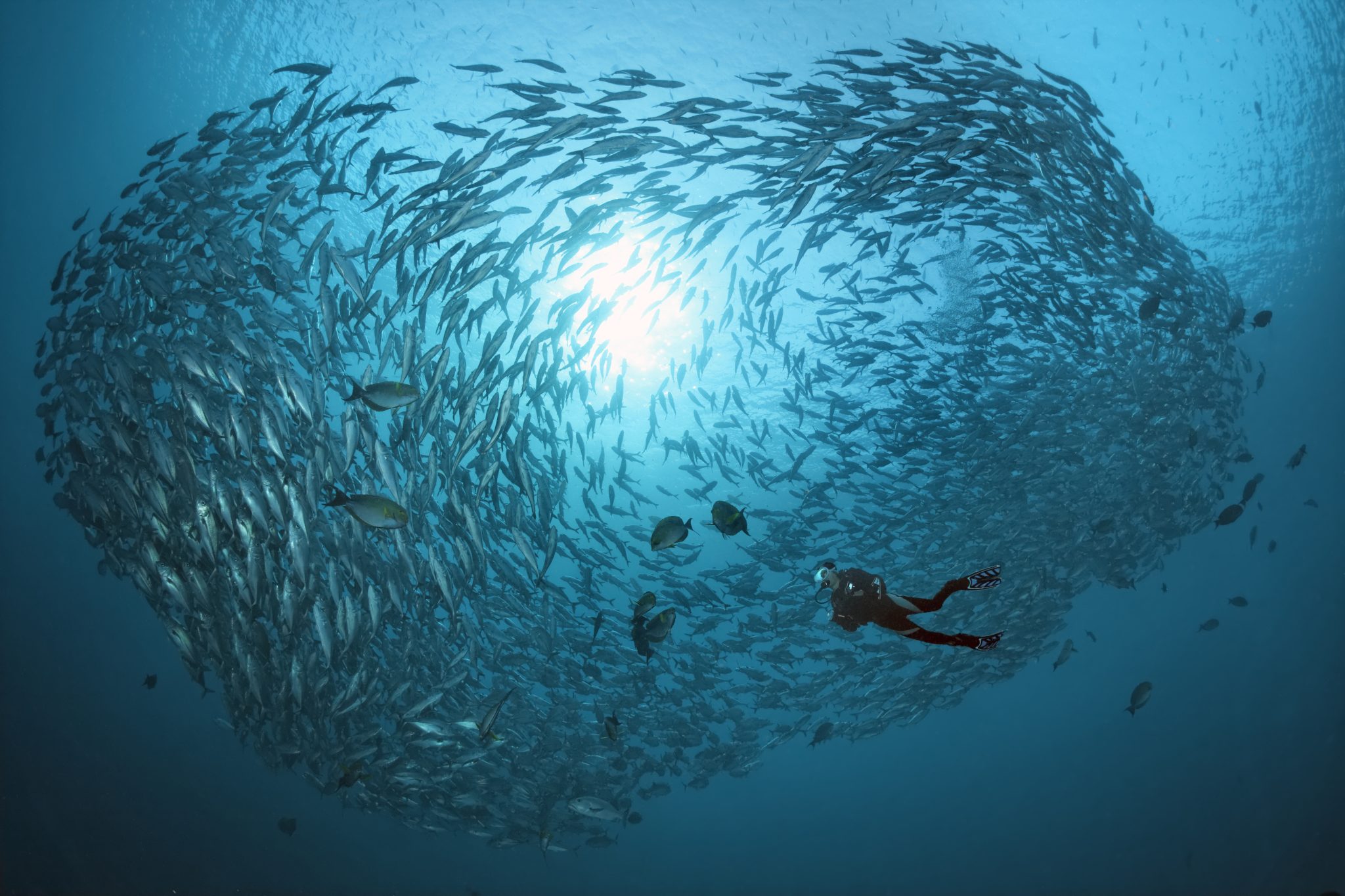

Overview
Fact File
| Capital | Canberra
|
| Population | 258,000,00
|
| Languages | English |
| Time | GMT+8 to +10 |
| International Dialling Code | +61
|
| Currency | Australian Dollar (AUD)
|
| Tourist Board | |
| International Airports | Sydney (SYD), Melbourne (MEL), Brisbane (BNE), Perth (PER), Adelaide (ADL), Gold Coast (OOL), Cairns (CNS), Canberra (CBR), Hobart (HBA), Darwin (DRW), Sunshine Coast (MCY).
|
About The Diving
Australia is famous for the Great Barrier Reef in the Coral Sea. Stretching over 1400miles along the Queensland coast, it is one of the seven natural wonders of the world. As the biggest reef on Earth, the GBR attracts divers from all over the world, who are rewarded with spectacular marine life and vibrant coral reef. However, being surrounded by warm oceans, Australia’s massive coastline offers an incredible array of diving opportunities on the other coasts too.
Below we’ll take a highlights tour around this epic continent starting with the GBR in Queensland, clockwise round the coast, finishing up with Australia’s Indian Ocean Territories.
Dive Highlights
Queensland
The Great Barrier Reef is probably the most famous scuba diving destination in the world, covering over 1400 miles of ocean and over 2900 individual reefs. There is so much diving to be done here and this huge coral reef system has something for every diver. Day trips can be taken from Cairns and Port Douglas. Liveaboards give the chance to reach sites further offshore.
Whitsunday Islands
Accessed via the town of Airlie Beach, the Whitsunday Islands lie between the coast and the GBR. Topside they are covered in rainforest and white sand beaches while beneath the waves the water teems with tropical marine life, corals, and vibrantly coloured fish. At Pinnacles dive site, manta rays are regular visitors. There are fantastic dives here for all experience levels.
Port Douglas
Agincourt Reef off the coast from Port Douglas has 45 different dive sites, with a site for all skill levels. Friendly potato cod feed in schools at Cod Hole and sharks are also regulars at Dynamite Pass, with all the usual stunning reef life as a backdrop. Ribbon Reef sees a congregation of dwarf minke whales from June to July and has nesting turtles.
SS Yongala, Townsville
In 1911 the 350ft passenger freighter SS Yongala sank off the coast of Eastern Australia near Townsville. Today it is one of the most spectacular wreck dives, with the wreck still very much intact and incredible life including giant groupers, turtles, whales, sea snakes, manta rays and barracuda. As an official grave site, it is forbidden to enter the wreck, but some great dives can be had appreciating the wreck from the outside and enjoying the myriad of life it attracts. Some strong currents at depth make this dive more suited to experienced divers.
Southern Great Barrier Reef
Lady Elliot and Lady Musgrave Island are great places to see guitar and leopard sharks and even manta rays. The nearby wreck HMAS Tobruk is a large wreck with huge amount of life and the waters around Heron Island are full of corals and fish with over 20 dive sites to explore. These islands are accessible form the coastal town of Bundaberg.
New South Wales
North and South Solitary Islands
Off the coast of Coffs Harbour, these islands are bathed in the East Australian Current, which brings tropical species with its warm waters. Grey nurse sharks and wobbegongs can be seen amongst the soft corals and anemones.
South West Rocks
Famous for its extensive cave dive site Fish Rock Cave, this site is worth the trip, with 125m long cave filled with sand tiger sharks, wobbegongs, moray eels, stingray, lion fish and grouper.
Lord Howe Island
This is the place to see large schools of Galapagos sharks, and the Ballina angelfish, normally found below 100m is also seen at shallow depths here. Only 400 tourists are allowed on Lord Howe Island at any time, so dive sites will never be crowded, allowing divers to relax and enjoy the sites. The mix of currents results in unique endemic species and rare corals in the area.
Shelly Beach
Near Sydney’s Manly area, Shelly Beach has seagrass beds and a maze of boulders where divers can search for cuttlefish, weedy seadragons, Port Jackson sharks, rays and octopus.
Victoria
Port Phillip Bay
The bay has several excellent pier dives as well as being full of over 50 shipwrecks. The 136m guided missile destroyer HMAS Brisbane and four WWI submarines are just some of the must-do dives in the area.
Portsea Pier
This great shore dive has weedy seadragons, seahorses octopus, cuttlefish and the amazing goblin fish. This is by no means the only good pier dive in Victoria, but is well worth the trip round the Mornington Peninsula from Melbourne.
Tasmania
Bicheno
Bicheno is one of the best places to dive in Tasmania, with around 20 sites in Governors’s Island Marine Reserve featuring weedy seadragons, yellow soft crabs and Australian swellsharks. Tours are limited but local dive shops will rent equipment to qualified divers.
Tasman Peninsula
The Tasman Peninsula has one of the best wall dives in Australia at Sisters Rocks. Cathedral Cave is Australia’s largest sea cave system and the wrecks of the SS Nord and Troy D are some other fantastic dives. Ninepin Point Marine Reserve is known for deep water species living in the shallows due to the dark tannic-rich waters from the nearby Huon River.
South Australia
Fleurieu Peninsula
The peninsula has some good wreck and reef dives, but the most exciting thing is the number of great, easy and accessible shore dives. Edithburgh, Port Hughs and Rapid Bay Jetties are all teaming with life and make for brilliant diving day trips from Adelaide. Leafy seadragons live here and can be seen swimming around the coral and sponge encrusted pillars.
Kangaroo Island
This beautiful island offshore from Adelaide has great diving on offer. The dive options are numerous, with shipwrecks and abundant sea life including leafy seadragons, New Zealand fur seals and dolphins. Topside visitors can observe kangaroos, koala, platypus, penguins and seals. With lots of activities and places to explore Kangaroo Island is a great holiday spot for the whole family.
Port Lincoln
This is the place go to cage dive with Great Whites in Australia. Great Whites frequent the Neptune Islands, where divers can do a day trip cage diving tours with specialist companies.
Western Australia
Esperance
Esperance boasts blue waters and smooth beaches. The nearby Recherché archipelago is a great place to see sea lions, dolphins and seadragons.
Albany is home to the HMAS Perth, purpose sunk wreck for divers in 2001 sitting in 36m of water. Whales visit the area from July through to October and the nearby dive sites are home to turtles, blue grouper, whale sharks as well as Port Jackson sharks and large gorgonians.
Ningaloo Reef is a fringing reef off the coast from Exmouth. Famous for its whale sharks that come to feed on plankton in April and May, the reef is also home to 260 species of hard coral and beautiful array of tropical marine life. Turtles, migrating humpback whales and manta rays can also be seen here. Exmouth’s Navy Pier is also an excellent dive known for giant groupers and a variety of marine like that takes shelter under the jetty.
Northern Territory
Darwin
This city has a host of wrecks to dive including the FV Marchart III, MV Zealandia, and Song Saigon. The USAT Meigs wreck is home to cod, barracuda, golden snapper, wobbegong sharks and angelfish and is suitable for divers of all levels.
Australia’s Indian Ocean Territories
Christmas Island
This remote location is well worth the journey. Perched on the edge of the Java trench, the Indian Ocean’s deepest point, the island’s fringing reef is surrounded by a drop off of over 1000m. Here, large pelagics cruise by including reef sharks, spinner dolphins, turtles, eagle rays and manta rays. Migrating whale sharks can also be seen between November and April.
Cocos (Keeling) Islands
These even more remote islands are coral cays with turquoise lagoons. Dive sites here include shallow wrecks, manta cleaning stations and beautiful coral gardens.
When To Go
There is great diving year-round in Australia. Depending where you go there are some highlights at certain times of year.
Queensland: Year-round, summer months are best. Minke and humpback whales June – August.
New South Wales: Late summer has warmer water, with visibility improving from the hottest months and good shark sighting. Winter has the best visibility.
Victoria: August – December
Tasmania: Temperatures are warmer in summer months, visibility is better in winter.
South Australia: Great White Sharks are seen May – February
Western Australia: Ningaloo April – May
Northern Territories: The best time to dive is May – October and whale sharks can be seen August – September.
Australia’s Indian Ocean Territories:
Christmas Island has calmer waters July – October, whalesharks are best seen November – April.
Cocos (Keeling) Islands are diveable year-round, but best dived May – November for the big fish.


